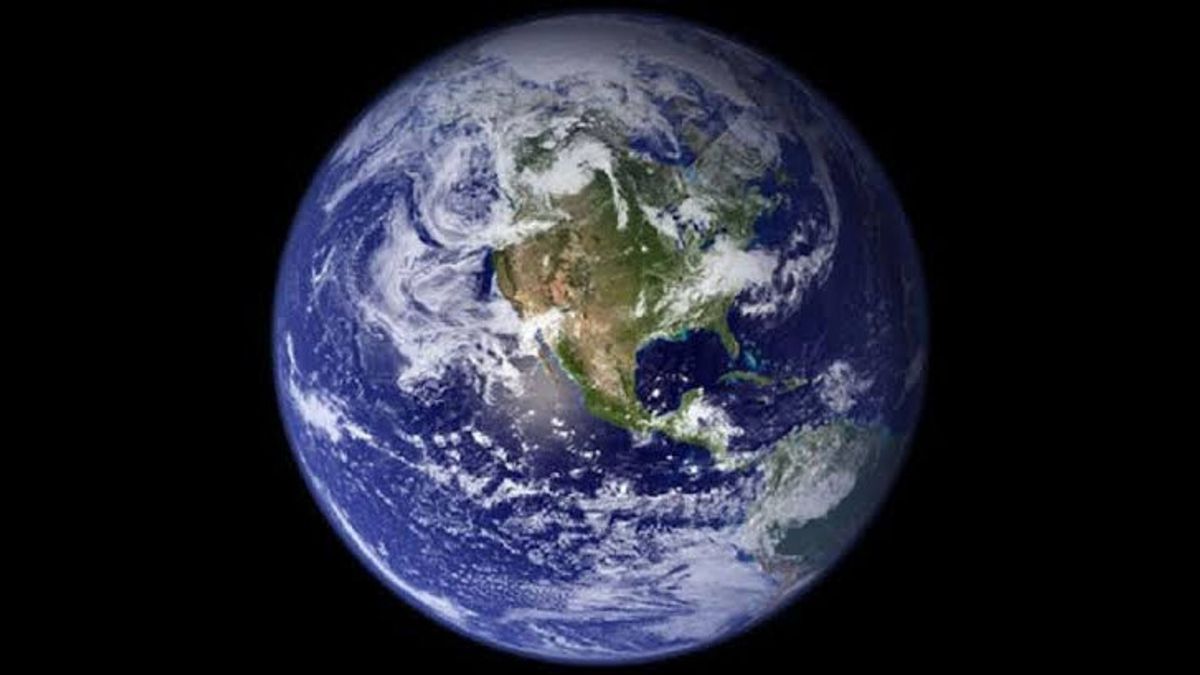JAKARTA - The researchers managed to find the fifth layer of Earth's core which is a solid metal sphere with a diameter of about 400 miles. They took advantage of seismic waves generated by the earthquake, revealing the deepest part of the core.
Previously, many researchers believed Earth had only four different layers, such as the earth's crust, mantle, liquid outer core, and dense inner core.
But in recent decades, researchers believe the inner core actually consists of two layers, which are referred to as the inner core and the deepest core.
The research team from the Australian National University then proved it by measuring how seismic wave speeds can penetrate and pass through the earth's core. As a result, they found different layers inside the Earth known as the deepest core.
The researchers analyzed data from about 200 earthquakes measuring 6 and above from the last decade. When an earthquake occurs, it triggers an energy wave moving through the rocks.
These waves move at different speeds based on the type of minerals that make up rocks and rocks can be stiffer or softer.
Certain types of seismic waves cannot move through fluids, so they bounce off the fluid layer. This layer is a solid metal ball located in the middle of the inner core.
The study's findings have been published in the journal Nature Communications, which investigates the center of the earth as essential to understanding planetary formation and evolution.
"The presence of an internal metal sphere inside the inner core, the deepest core, was hypothesized about 20 years ago. We now provide other evidence to prove such a hypothesis," said the lead author of the study Dr. Thanh-Son Ph.
Researchers assess seismic waves that run directly through the center of the earth and vomit on the opposite side of the world to where the earthquake was triggered. Waves then travel back to the source of the earthquake.
They studied the earthquake from Alaska, where the waves bounced off somewhere in the southern Atlantic Ocean, before returning to Alaska.
In the study, researchers revealed that by piling up waveforms recorded by more and more global seismic stations, they observed earthquake waves up to five times that of selected earthquakes along Earth's diameter.
Furthermore, the researchers studied the anisotropies of iron-nickel alloys consisting of the interior of the earth's core. Anisotropies are used to illustrate how seismic waves accelerate or slow through terrestrial core matter, depending on the direction of their journey.
They found that seismic waves bounced repeatedly investigating points near the center of the earth from various angles. To assess various types of earthquakes, researchers also analyzed the variation of the travel time of seismic waves.
As it turns out, there is a crystallizing structure inside the innermost area of the core likely to be different from the outer layers. Researchers suspect, there may be major global events at several points during the timeline of Earth's evolution that cause significant changes in the crystal structure of the inner core.
Anti in this is like a time capsule from Earth's evolutionary history is a fossil record that serves as a gateway to the past events of our planet. Events that occurred on Earth hundreds of millions to billions of years ago,' said one researcher, Hrvoje Tkal Badminton, in a statement.
An interesting question now is how two core layers are formed. Researchers argue there may be major events in planetary development that create major changes to the core structure.
"There are still many unanswered questions about Earth's deepest core, which can keep secrets to unify the mysteries of our planet formation," said Tkal Badminton, as quoted by Digital Trends, Wednesday, March 1.
The English, Chinese, Japanese, Arabic, and French versions are automatically generated by the AI. So there may still be inaccuracies in translating, please always see Indonesian as our main language. (system supported by DigitalSiber.id)








